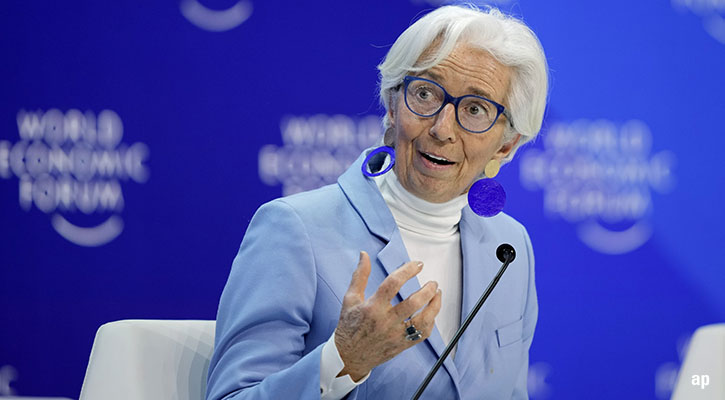Merknad: Deler av videoen er USA-sentrert, men hovedbudskapet gjelder også i Norge.
Christine Benz: Hi, I'm Christine Benz for Morningstar.com. Low yields have many investors scrambling into risky securities for higher income. I recently sat down with Joel Dickson, who is a senior investment strategist in Vanguard's investment strategy group, to discuss some of the pitfalls that come along with chasing yield.
Joel, thank you so much for being here.
Joel Dickson: Thanks for having me, Christine.
Benz: One hot topic among retirees is where to go for income. We have a lot of retirees who are really frustrated by the current low-yield environment and frankly are very interested in looking to their portfolios for current income. What's your counsel to them at this point in time?
Dickson: Yeah, you think about a generation ago, you could build a well-balanced, well-diversified, say, stock and bond portfolio and sort of get those rule-of-thumb sort of distribution amounts that we talk about, like a 4% distribution as being sort of sustainable in your retirement years or in your distribution phase. That 4% is hard to come by now in a broadly diversified income-yielding portfolio. And so, what we've started seeing, and it's not just among retirees but even people searching for yield broadly, is going into different asset classes or maybe subasset classes and changing the risk characters of their portfolio, just for the sake of trying to get a little bit more yield. So on the fixed-income side people might be preferring high-yield bonds or even corporate bonds and then maybe high-yield bonds. On the equity side, it's maybe more high-dividend-paying equities or even worse to a certain extent from changing the risk character of your portfolio, moving from lower-yielding fixed income to higher-yielding equity.
Well, now, all of a sudden you've really changed the overall diversification and balance of your portfolio. Maybe you're taking on more equity risk if you've substituted out of fixed income for equities or maybe you've taken on more credit risk by being in high-yield bonds versus Treasury bonds. All of those create additional risks and lower the diversification value of the portfolio that you've created. And so, the search for yield in many ways, we think, is a bit misguided because it can have these ulterior or sort of uncompensated types of risks that are taken in the portfolio. Instead think of your portfolio as just the continuation of what you were doing in the accumulation phase: You were creating a broadly diversified portfolio for what will happen in the future, and in the distribution phase, you still have that portfolio to meet your cash flow needs.
And so, instead of searching for yield and thinking you have to take all of your return in the form of yield in order to meet your cash flow, think instead about it being your overall portfolio. This is why if you have some bonds or you have some equity, you can sell off some of the portion of it and meet the cash flow needs that you have. Now sometimes it's hard behaviorally to get people to think about that right because they are thinking "Well, I don't want to eat the seed corn." But it's a much more tax-efficient way of managing your portfolio, because yield tends to be more highly taxed then say capital gain or even return of principal, and at the same time, it's still the value of the overall portfolio that matters, not the amount of yield. And so, it's there to meet your cash flow needs and retirement. Use it.
Benz: So you're saying people needn't forsake income-producing securities. They can and should have income-producing securities in their portfolio, but they should be a little bit flexible about where they get their distributions, maybe it's from rebalancing proceeds or other sources of withdrawals?
Dickson: Exactly. There are many different sources of income, if you will, in a retirement situation and portfolio. Obviously, if you are over 70 1/2 and have Traditional IRAs you have required minimum distributions. Well, there is a source of income right there that you should consider spending first. You have Social Security. You may have pension or annuity income. All of that can be sort of thought of as contributing to the cash flow pieces of it, and then you have whatever the yield is on your investment portfolio. The caution that we would have for investors is to not sacrifice diversification and balance in your investment portfolio solely for the perception that you need to generate all of the income that you need in retirement from the yield on your investment portfolio.
Benz: One thing that we've seen in terms of monitoring flows into funds is that a lot of the bond funds that have been seeing inflows have some equitylike characteristics. Is that something retirees or anyone looking at income-producing securities should have on their radar that maybe they're buying bonds, but their bonds that might act like their equity portfolio?
Dickson: That's what I mean when we talk about, you have to be careful about the diversification and the balance in your portfolio. Shifting, for example, from Treasuries--which have historically have had low or even potentially negative correlations or go in the opposite direction relative to equities, especially in down periods for the equity markets--going from Treasuries to high-yield bonds, for example, you might say, "Well, it's still fixed income." But in fact high-yield corporate bonds have a much higher co-movement with equity prices. And so, if the equity market goes down most likely those high-yield bonds are also not going to perform as well. And so there you've sacrificed diversification solely for yield, but you'll say, "Well I still have fixed income; I still have equity." But in fact, you've really changed the risk characteristics of your total portfolio.
Benz: Joel, thank you so much for sharing your insights on this very important topic.
Dickson: Thanks for having me, Christine.







:quality(80)/cloudfront-us-east-1.images.arcpublishing.com/morningstar/PKH6NPHLCRBR5DT2RWCY2VOCEQ.png)




.jpg)








